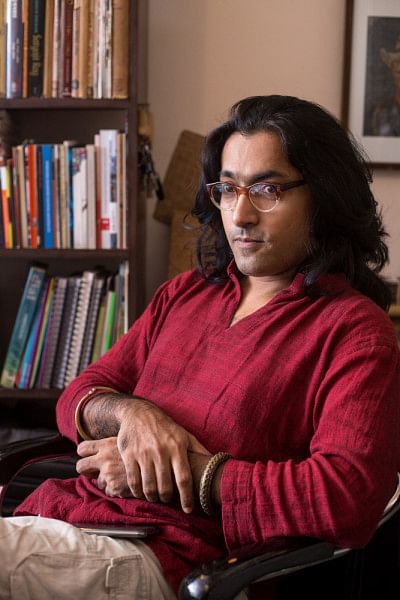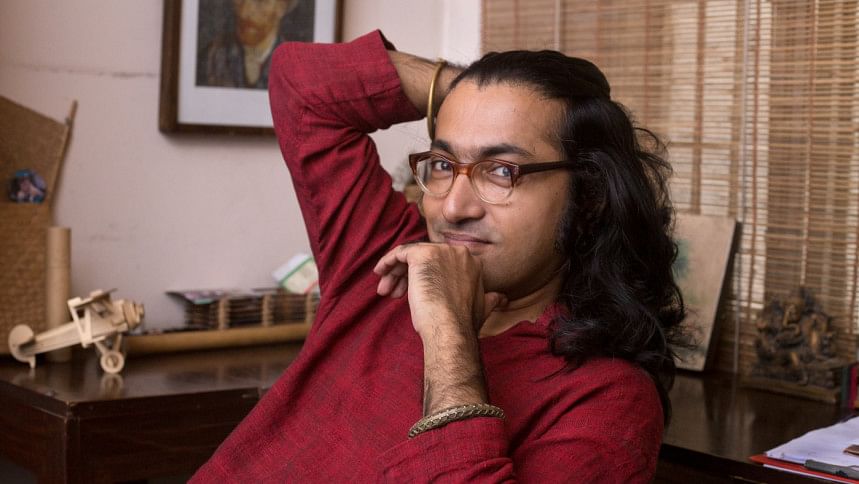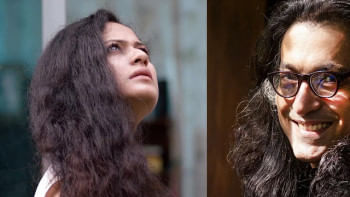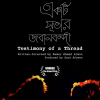The state should be more respectful towards filmmakers: Kamar Ahmad Simon

Internationally acclaimed director Kamar Ahmad Simon is rather well-versed in the art of dealings on the international film festival scale. Over the years, he has accumulated numerous awards. To add to his repertoire, his fourth and much-awaited film "Shikolbaha" (Silence of the Seashell) has recently been nominated for the prestigious Golden Goblet Award in the main competition of the Shanghai International Film Festival, which is Asia's largest film festival.
Following the release of "Shunte Ki Pao!" (Are you Listening!), the director patiently has been waiting for censor clearance for a year for "Anyadin..." (Day After…), the second film of his water trilogy series. The unfortunate turn of having to wait for the clearance came after he had already toured the film at various international festivals, back in 2022.
Kamar Ahmad Simon recently visited The Daily to speak about himself, his water trilogy, filmmaking techniques, and other related subject matters.

Tell us about the journey of constructing your famed 'water trilogy'.
The water trilogy is made up of "Shunte Ki Pao!", "Anyadin…", and "Aro Kichu Jibon". The first film premiered in 2012, followed by "Anyadin…". Filmed from 2013 to 2019 – it premiered at the main competition of International Documentary Film Festival Amsterdam (IDFA) in 2021 after a two-year post-production. The film received grants from IDFA and Sundance and won awards at Locarno. In 2022, "Anyadin…" was showcased at various festivals, earning a Golden Eye nomination in Zurich and a Harrell Award in Camden.
In our country, viewers often look for stars on movie posters before deciding to watch a film and since my films don't feature any stars, I tried to make the film itself a star.
Many tend to call your films 'documentaries'. You call them 'fiction-non-fiction'. Why is that?
If I were to give an example with "Anyadin…" to explain this question, I must mention that when it was showcased at the Museum of Moving Images (MoMI), it was selected among 18 feature films from around the world that year. In explaining their selection criteria, their website described these films as 'masterpieces that are changing the language of cinema or reinventing the language of cinema.'
However, there were films traditionally categorised as 'fiction' and 'non-fiction', and then there were hybrid films like "Anyadin…", which I refer to as a hybrid. For the gallery, the concept of a 'documentary' in the conventional sense did not exist.
In another reference, If you visit the Cannes website and search with the keyword 'Bangladesh,' you'll find three films listed under Official Selection– "Jago Hua Savera" (Cannes Classics), "Anyadin…" (L'Atelier 2017), and "Rehana Maryam Noor" (Un Certain Regard 2021). In 2017, "Anyadin…" was featured in L'Atelier, which included a total of 16 films, none of which were documentaries. "Anyadin…" (still unfinished at that time) also won the Open Doors Prize in Locarno's Piazza Grande competition. The competition featured eight projects, none of which were documentaries.
Neither L'Atelier in Cannes nor Open Doors in Locarno included documentaries then.

The language of your films has a distinct feature, which in hindsight might make many refer to them as documentaries. Is this language your own, or inspired by someone else's work?
Adwaita Mallabarman's novel, "Titash Ekti Nodir Naam", inspired by riverside life, feels real yet is celebrated as literature, not non-fiction. Individuals are continually driven, inspired, and influenced by various factors on a subconscious level. For me, a pure source of inspiration is Bengali literature. I consider myself a dedicated student of Bengali literature since I first began reading novels in the seventh grade.
Apart from that, if anything has moved me, it is SM Sultan's paintings. During my time as a Buet student, I visited an exhibition featuring SM Sultan's paintings. Standing before a towering 30-feet canvas of his work remains a vivid memory, leaving an indelible impression on me. Since then, I immersed myself in Sultan's life and art, finding great inspiration.
For instance, the inception of the movie "Shunte Ki Pao!" was sparked by an image on the front page of The Daily Star, depicting people using their bare hands to block a broken dam—a scene reminiscent of Sultan's paintings.
I craft my films with a specific purpose: to immerse the audience so deeply that they forget they're watching a movie. For example, during the filming of "Shunte Ki Pao!", I experimented with multiple cameramen before picking up the camera myself to create haunting, unsettling frames with a slightly shaky quality. I aimed to evoke unfiltered emotions that viewers couldn't access directly but could experience through the film.
In your film, characters exist under their real names, resembling real individuals on-screen. For example, in 'Shunte Ki Pao!', there's a scene where a mother teaches her child at home. How did you familiarise the people of a region like Sutarkhali with being filmed? How long did it take, and what challenges did you face?
I prefer creating films directly on the location with the people involved, rather than hiring outside actors and constructing sets. "Shunte Ki Pao!" was a lengthy process of about three and a half years. After exploring various locations, I settled on Sutarkhali. It took around six months to acclimate the locals to the camera, requiring multiple visits back and forth.
Initially, when I arrived, everyone was dressed up, expecting a fancy arrangement. But I'd turn off the camera and engage in conversation instead of filming. After repeating this process several times, they began to think, "He talks about movies but doesn't make them." Once they relaxed and got used to my approach, I began shooting. It demands patience, strategy, and a lot of learning. It's a form of practice.

Is there an update on the clearance situation of 'Anyadin…'? Numerous directors opt to release movies on OTT platforms due to censorship hurdles or prolonged waiting periods. Would you tread that way?
I have directed "Shunte Ki Pao!" and "Anyadin…" for the big screen, not tailored for small screens. I aim to showcase the films in theatres, hence keeping my patience with censorship. Regarding the complexity faced by directors, the state should be more respectful towards filmmakers. This isn't just about me, it's about all directors. Removing a movie from its timely narrative is akin to erasing time itself and, in a way, erasing the filmmaker.
Are our independent and young filmmakers turning more to festivals?
I think a person only steps out when the local audience fails to appreciate their [filmmakers'] talent and understand their message. If someone wants to express themselves through a film but faces obstacles, they seek alternative avenues. Think about it, I might be getting the necessary attention from the media because I ventured into participating in events like the IDFA.
Attending events organised by the likes of the IDFA Institute might become the reason why someone like me gets noticed by the media, but in retrospect, this highlights our cultural issue. Whenever a Bangladeshi film reaches a globally respected platform, it becomes a representation of Bangladesh itself.
The world is inherently Eurocentric, and for those of us from post-colonial nations, it feels like we're still in a heavily colonised environment. By screening my films in major local theatres, I can connect with audiences within my own country. Once a person receives the appropriate acknowledgement from local audiences, they can never really leave the domain. Even then, my audience still values my international reach.
However, I do hold certain criticisms — directors nowadays are less concerned about the type of film they create, why they create it, or what message they try to convey. Personally, I believe that art has never existed, nor will it ever exist, solely for its own sake. Art always has a purpose.
Translated by Zareen Nawar.

 For all latest news, follow The Daily Star's Google News channel.
For all latest news, follow The Daily Star's Google News channel. 









Comments